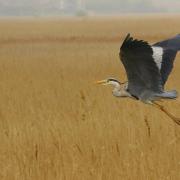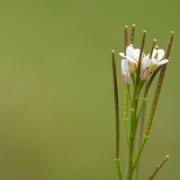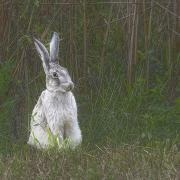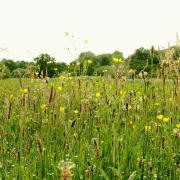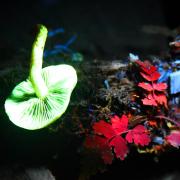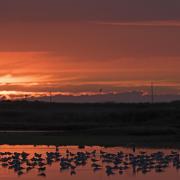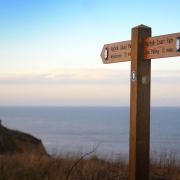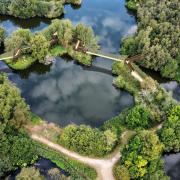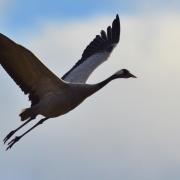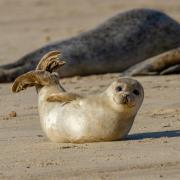Norfolk Wildlife Trust evangelist Nick Acheson shows us the beauty of the county’s natural world in June

It is the end of March and I’m sitting in my garden, laptop, for once, exactly where it says on the tin. The sky above is the heavenly, dunnock-egg blue of a day much later in the year – June perhaps – but the fat bumblebee queens feeding in the dwarf cherry beside me, the bee-fly making frenetic zigzags between flowers and the sawing of the wind at my dry skin all belie that impression. It is beautiful, but it is March all the same.
Having grown up in north Norfolk, and having returned here from life abroad more than a decade ago, it is usually easy for me to write this column two months ahead of publication. Watching the year’s wildlife in Norfolk, seeing seasonal friends ebb and flow, comes as naturally to me as breathing; so, in a normal year, it is easy to write an article about the wildlife to be seen in our countryside in two months’ time, simply calling on my mind’s eye for guidance.
In a normal year, that is. 2020, it will not have escaped your notice, has not been the most normal of years. As I write, on a cold, bright day in late March, the country is observing exceptional rules to slow the spread of Covid-19. By any normal standard, we simply do not know what June will bring.
Despite the disruption, despite the anxiety which lies ahead for many of us in the coming weeks, I can, however, cast my mind forward and see what wildlife will be gracing our Norfolk in June. And there’s a lesson in that. In June there will be lapwing chicks, trotting on stout legs over the lush grass of our marshes in Broadland, Fenland and along the coast.

In June there will be emperor dragonflies patrolling, like enamelled time-travellers from the Carboniferous, over our lakes and ponds. In June there will be long-eared owl chicks, squeaking by night for food, in the secret depths of our pine woods and plantations.
In June there will be blue tit chicks, their cheeks flushed an innocent buttery yellow, hopping clumsily through shrubs in our gardens, learning the business of being blue tits.
In June there will be flowers too. Our old meadows and unspoiled verges will be heady with the blooms of a million oxe-eye daisies. Beneath them, in damp hollows, orchids will glow: the fat waxy spikes of early marsh orchids and the dusty heads of marsh helleborines.

Norfolk’s most beautiful songbirds
Around the happy, gold flowers of bird’s-foot trefoil this June there will be common blue butterflies: males with wings borrowed from today’s sky and females the delicious near-black of 85% chocolate, but dusted blue. Nearby there will be six-spot burnets lazing on the lavender crowns of field scabious. In June there will be wildlife, prolific and wonderful, I promise.
And there’s the rub. Being human, having a human brain, inevitably involves a degree of self-obsession. We are simply too clever to avoid thinking about the future, running scenarios through our minds, the what ifs and but maybes.
Nature – composed of every other living thing on earth – does no such thing. Nature is. Without being too mechanistically Darwinian, the creatures all around us all the time, have two aims in life. The first is simply to survive the day. Until Covid-19 appeared, most of us reading this magazine had largely forgotten what it was to fear falling prey to something else.
The great tits in our gardens, live, if not in fear, at least in a constant state of awareness of the sparrowhawk. The muntjac in our hedges and woods, though safe from the leopards which hunt them in their native China, still bark in alarm when disturbed. The dragonflies over the pond dart as the hobby swoops.
Beyond self-preservation our wild brethren want to breed, to pass their genes to future generations, to be links in the chain of life, to be ancestors. This is what flowers, and birdsong, and dancing hares, and rattling frogs all mean. Beyond that, wild creatures are. They simply are. And simply being, they make our human lives inestimably richer. In these strange, troubling times, not one of us will have failed to notice birdsong a little more clearly because the traffic has gone. Not one of us will have failed to stop by a flower on a walk and smile. Not one of us will have missed the first butterfly of spring - a peacock perhaps, a comma, a small tortoiseshell - the first ladybird, the first fat queen bumblebee.
Whatever June brings, it will bring wildlife, all around us, everywhere. In times of darkness, stop to watch it, for a moment simply be, and your life will be richer, for that moment, and forever.
Follow Nick Acheson on Twitter @themarshtit
More great Norfolk stories and photos on our Facebook page.





